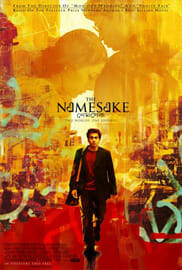The Namesake

Director: Mira Nair
Writers: Screenplay by Sooni Taraporevela, based on the book by Jhumpa Lahiri
Starring: Kal Penn, Tabu, Irfan Khan, Jacinda Barrett, Zuleikha Robinson
Studio Info/Running Time: Fox Searchlight, 122 mins.
Based on the book by Pulitzer Prize-winning novelist Jhumpa Lahiri, The Namesake traces the slow, stilted assimilation of a couple who immigrate to New York City from Calcutta in the late 1970s, bear two children, snag a Volvo and split-level ranch in the suburbs, and watch powerlessly as their children inch further and further away from their rich Bengali tradition.
-

-

-

-

-

-

-

-

-

-

-

-

-

-

-

-

-

-

-

-

-

-

-

-

-

-

-

-

-

-

-

-

-

-

-

-

-

-

-

-








































